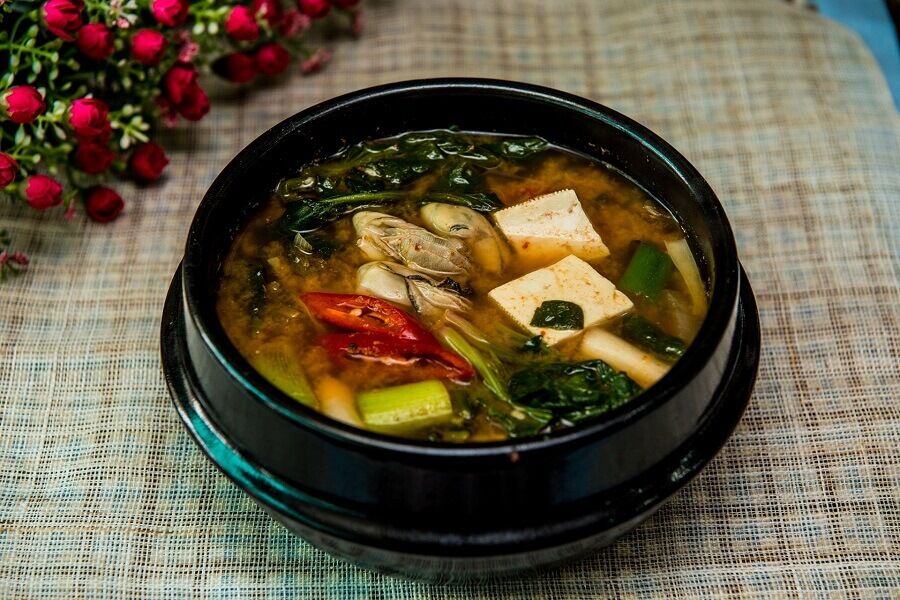All About Miso
Understanding Spices
Your cart is empty.
SUBTOTAL
£0.00

Understanding Spices
Miso means ‘fermented beans’ in Japanese. It’s a fermented paste which adds a savoury, umami-rich flavour to all kinds of dishes. It’s an essential ingredient in Japanese cooking, where it’s been consumed since at least the eighth century. There are over 1,000 types of miso which range in texture, flavour and colour, depending on the ingredients, length of fermentation and the condition in which it’s kept in.
The traditional process of making miso can last weeks to years. It’s made by fermenting soybeans with a grain like rice, buckwheat or barley, salt and koji, a mould called Aspergillus oryzae. The longer it’s fermented, the darker and more intensely flavoured the paste is, whereas a short fermentation period results in a sweeter and lighter miso. These two types of miso — dark or red, and light or white — are the ones you’ll most commonly find in supermarkets.

Although different types of miso pastes can be used interchangeably in recipes, as a general rule, light or white miso is suitable for light dressings and sweets and dark or red miso is better suited for stews and long braises.
Miso is ready to use out of the container, and can be cooked or eaten raw. As miso comes in paste form, it can be used in sauces, dressings, batters and liquid based dishes. It’s best when added towards the end of cooking, but be careful not to boil the dishes it’s cooked in — too much heat can kill the active bacteria.
Miso is most commonly used in miso soup, a traditional Japanese dish of dashi stock, miso paste and additional ingredients like vegetables, tofu and seaweed. Miso goes well in soups and noodle dishes like ramen, and adds flavour to marinades and gravies. Miso tenderises the meat and allows other flavours to soak in.
Next time you’re making homemade chicken schnitzel, add a little miso paste to the breadcrumbs before crusting the chicken, or the fish, halloumi or vegetables — whatever you’re making. As breadcrumbs are pretty flavourless on their own, the miso adds a deeper flavour to the dish.
You can also use miso to add extra flavour to stir fries. It pairs well with ingredients like garlic, soy sauce, rice vinegar, brown sugar and sesame oil. You can even make miso butter (miso paste mixed with butter and lime juice) and add it to your stir fry towards the end of cooking. Miso butter can also be spreaded onto garlic bread or barbecued corn.
Miso paste can also be used in sweet recipes for bigger, bolder flavours. Add to puddings, chocolate and vanilla desserts, caramel, cookies or fruit pies.
Here are some more recipes which use miso:

Miso is a really healthy ingredient and contains a good amount of vitamins, plant compounds and minerals such as calcium, iron, selenium, magnesium and phosphorus. One ounce of miso paste provides:
The fermentation process behind miso helps to improve digestion by promoting the levels of good bacteria, known as probiotics. Probiotics help to restore the natural balance of bacteria in the gut which is important as this defends the body against diseases such as inflammatory bowel disease (IBD).
Consuming miso can protect your body against certain cancers, such as stomach, liver and breast cancer. This is attributed to the paste’s isoflavones and antioxidants which protect the body from damaging free radicals, a type of cell damage which is linked to cancer.
As it’s rich in probiotic bacteria, miso paste helps to fight infections and make your immune system stronger. Regularly consuming fermented food reduces your risk of getting sick, helps you recover from infections faster, and reduces the need for antibiotics when fighting infections.
Understanding Spices
Spices have long been integral to the UK's culinary landscape, adding depth, flavours, and richness to a myriad of dishes. From the pungent aroma of cumin in Indian curries to...
Read MoreUnderstanding Spices
Confetti is an essential part of any wedding day. Not only is it a wonderful way to greet a newlywed couple, but it also provides some beautiful photo opportunities. The...
Read MoreSeasonal Ideas
It’s no secret that any handmade gift will always be more special than a store-bought one. Homemade food gifts are especially wonderful, a labour of love that shows someone you...
Read MoreHealth and Wellbeing
It’s no secret that winter’s cold and gloomy weather makes us crave indulgent dishes like fondue and baked goods like sticky toffee pudding and apple crumble. While Christmas is the...
Read More